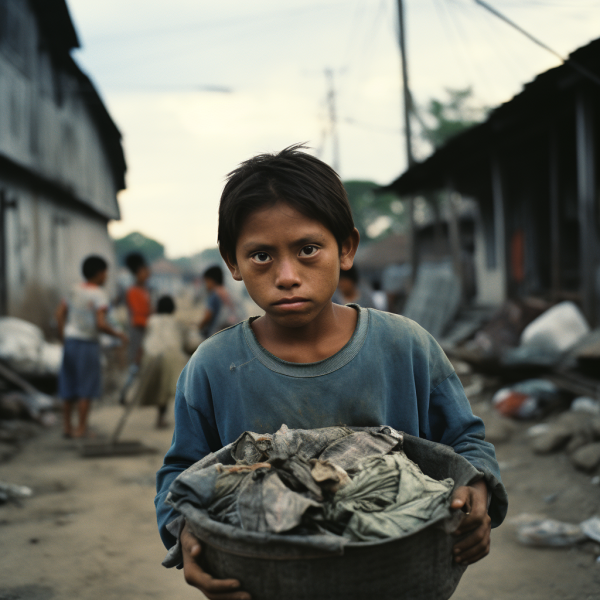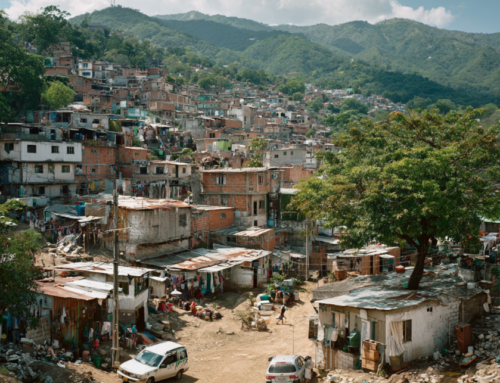By Honduras Foundation Founder Mike Savage
Honduras faces one of Latin America’s most persistent challenges in its battle against child labor. Despite numerous international agreements and national laws designed to protect children’s rights, economic necessity continues to force many Honduran children to work instead of attending school.
We’ve recently discussed the psychological effects of poverty on families in Honduras.
Now, let’s examine the complex relationship between family poverty and child labor in Honduras, exploring the socioeconomic factors that perpetuate this cycle and the implications for the nation’s development.
The Scale of Child Labor in Honduras
Honduras has one of the highest rates of child labor in the Western Hemisphere. According to recent estimates, approximately 15% of children between the ages of 5 and 17 are engaged in some form of labor. Many work in hazardous conditions in agriculture, particularly in coffee plantations, while others work in domestic service, construction, or informal street vending.
Poverty as the Primary Driver
Family poverty stands as the fundamental driver of child labor in Honduras. With nearly 60% of the population living below the poverty line and about 30% in extreme poverty, many families face impossible choices regarding their children’s futures.
Economic Necessity
For many Honduran families, a child’s income represents an essential contribution to household survival. When parents cannot earn enough to meet basic needs, children often become economic participants by necessity rather than choice. In rural areas, where poverty rates exceed 65%, children frequently work alongside parents in agricultural fields simply to ensure the family can eat.
Limited Access to Quality Education
While Honduras has made progress in expanding educational access, significant barriers remain in the role of education to overcoming poverty in Honduras. Many families cannot afford school supplies, uniforms, or transportation costs.
Furthermore, the perceived quality and relevance of education is often questioned when immediate economic needs are pressing and visible pathways to employment through education seem uncertain.
Structural Factors Perpetuating the Cycle
Income Inequality
Honduras has one of the highest levels of income inequality in Latin America. The wealthiest 20% of the population controls approximately 60% of the nation’s wealth, while the poorest 20% has access to less than 3%. This extreme disparity creates structural barriers to economic mobility for impoverished families.
Limited Social Protection
Despite some advances in social protection programs, Honduras lacks comprehensive safety nets that could help vulnerable families weather economic hardships without resorting to child labor.
Conditional cash transfer programs like the Bono Vida Mejor have shown promise but remain insufficient in scale and scope.
Rural-Urban Disparities
Rural areas of Honduras face particular challenges. Limited infrastructure, fewer educational opportunities, and greater dependence on seasonal agricultural work create conditions where child labor becomes normalized as part of family survival strategies.
Long-term Consequences
Educational Impact
Children engaged in labor typically experience reduced educational attainment. Many drop out of school entirely, while others attend irregularly, leading to poor academic performance. This educational deficit perpetuates intergenerational poverty, as these children grow into adults with limited employment prospects.
Health and Development Effects
Child labor often exposes children to physical hazards, particularly in agriculture where exposure to pesticides, dangerous tools, and extreme weather conditions is common. These working conditions can lead to long-term health issues and developmental challenges.
Economic Implications
While child labor provides immediate income for families, it represents a significant loss of human capital development for Honduras. The country sacrifices future productivity and innovation when children work instead of developing their full potential through education.
Promising Interventions
Integrated Approaches
The most successful interventions recognize that child labor cannot be addressed in isolation. Programs that combine income support for families, educational incentives, awareness campaigns, and enforcement of child labor laws show the greatest promise.
Educational Investments
Improving the quality, accessibility, and relevance of education is crucial. Schools that accommodate the realities of poor families—through flexible schedules, elimination of hidden costs, and practical curriculum—can increase attendance rates among working children.
Economic Empowerment for Parents
Programs that enhance parents’ earning capacity through vocational training, microfinance, and small business development help families reduce dependence on children’s income.
***
Child labor in Honduras represents both a symptom and a cause of persistent poverty. Breaking this cycle requires coordinated efforts across multiple sectors, sustained political commitment, and recognition that protecting children’s rights is integral to the country’s development.
While progress has been made, much work remains to ensure that economic necessity no longer forces Honduran children to sacrifice their education and childhood for family survival.
As Honduras continues to develop its approach to this complex issue, solutions must address both immediate economic needs and long-term structural factors that perpetuate poverty. Only through such comprehensive strategies can Honduras ensure that all its children have the opportunity to learn, develop, and contribute to building a more prosperous and equitable society.
ABOUT MIKE SAVAGE
Mike Savage is the Founder of 1-800Accountant that helps businesses with their accounting services and needs through cutting-edge technology and customer support.
He and his wife spearhead the Savage-Rivera foundation to help impoverished families in Honduras.




